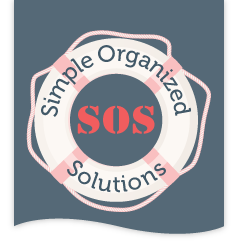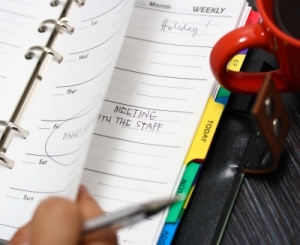A new year has just begun and this is the time we tend to think about New Year’s resolutions, or goals, or whatever you call them. Or another way to look at it is, what we want to accomplish this year. It could be personally, or in our professional lives or both.
Part of this process is to put away the holiday decorations, to wrap up the holidays, to get our homes back in order.By doing this, you are clearing the clutter to create a clean slate so you can focus on the things you want to get done this year. Here is a link to a blog post with a few tips to help you wrap up the holidays.
Now that you have put the past year to rest, your mind will be in the correct state to focus on your plan going forward. There are some things to consider such as, what you want to do, what worked and didn’t work so well last year, what you won’t do based on understanding your own inner self, your stress management techniques, who else your plan will effect, and how to create the plan. Use the questions below to serve as a guide to create a plan for a peaceful, productive new year.
What do you want to accomplish this year?
Find a quiet place, sit or lounge in a comfy chair, and make a cup of tea. Think about what you want to do with the next 12 months. This could be in your personal life, work life, or both. Just jot down some ideas. They don’t have to be detailed at this point, just get them on paper. You may have more than one list, one for each area of your life.
What worked and didn’t work last year?
This is the time to reflect on last year’s list. Think about the things you did last year that went off without a hitch, and those that didn’t. By determining why they did, or didn’t work out, you learn valuable lessons. It will make things a little easier this year by learning from your mistakes.
What do I know I won’t do?
This is different for everyone. You know yourself better than anyone, and the things you absolutely won’t do, no matter how hard you try. One of your goals could be to lose 20 pounds in six months. That’s a good goal. Now you need to look at the steps you plan to take to reach that goal. If you plan to go to the gym to work out every morning before work, you need to understand if that’s something you will really do. That means you have to get up much earlier in the morning. The actual time you get up requires you to factor in the travel time it takes to get to the gym, the workout, shower time, and then travel time to work. Will you really get up that early every morning to work out? I’m not trying to discourage you. I’m just trying to get you to understand what you will realistically do to make your goals attainable; to save yourself some frustration. For this particular goal, you may consider implementing a workout routine that can be done at home before work. That way you may not have to get up so early in the morning.
What things do you do to manage stress?
This is a very important question. We all have stress in our lives, personal, as well as work related. We think it would be great if we could eliminate all the stress, but actually, we need some. We need the kind of stress that puts us in the fight-or-flight mode to survive. For all the rest, we need at least one mechanism to keep it minimal for a healthy, peaceful life. Some common things are, exercise, meditation, breathing techniques, and downtime, or vacations. Whatever it is that you do to relieve stress needs to be incorporated into your plan on a regular basis.
Who else besides me, needs to be considered in this plan?
If it’s just you, that’s easy. If not, you need to discuss your thoughts with those in your life that may be affected, before you get too far along into your planning. That may be one of the things that didn’t go so well with last year’s goals.
Creating a plan
After you have answered the questions above, you are ready to create your plan. Take your list of goals and write down the action steps beside each one that you will take to reach the goal. The action steps will provide the basis to tweak existing routines to incorporate your new goals. After you have your action steps defined, you need to schedule them. A daily planner, either paper or electronic, is a great planning/scheduling tool. Post your goals and keep your planner with you. By posting your goals where you can see them all the time, possibly in your planner, you keep them in your mind’s eye, and will likely achieve them. You also want to keep your planner close, so you are aware of your schedule to stay on track, and keep from missing appointments to reduce your stress.



